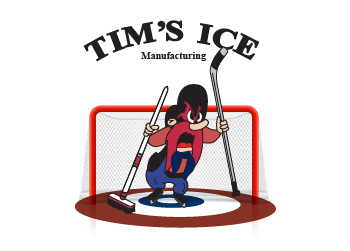We have compiled some of the best resources to help you learn, understand, and even improve in the game of Curling!
Learn to Curl dates for 2024 Season
Tuesday, Sept 24th - 7:00-8:30
Thursday, Sept 26th - 7:00-8:30
Monday, Sept 30th 7:00-8:30
Wednesday, October 2nd 7:00-8:30 -CANCELLED
$10.00/session. Please email info@curlbeaumont.ca to Register!! Hope to see you out there.
About Curling
About the Sport
Curling has a long and rich history. While its origins are lost in the mists of time, Scottish curlers already were playing the game by the beginning of the 16th century on frozen ponds and lochs.
Their earliest equipment included stones formed by nature, each one unique. These stones often curved, or “curled,” as they slid down the ice, and the players used besoms or brooms to clear snow and debris from the path of the stones.
Today, curling is a game of strategy, finesse and strength, contested by teams generally comprised of four players. The principle of curling is simple – get your stone closer the center of the target circles, called the “house,” than your opponent. Players of all skill levels can participate and compete even at older ages than most sports allow.
Respect, honor and tradition are core elements of the game. Curlers are close knit and you can rely on a warm welcome in curling clubs throughout the world. Camaraderie among players is inherent in the sport and tradition calls for both teams to sit together after a game, discussing what was and what might have been.
Come join us!
Curling Terminology
Curling, probably more than any other sport, has its own unique terminology (like hurry hard and burning a rock, among others). Here are the key curling words and phrases you need to know to blend in at your next bonspiel:
- Blank end: An end where no points are scored.
- Bonspiel: A tournament in which curlers compete.
- Burning a rock: A rules infraction that happens when a player touches a stone as it’s traveling down the sheet.
- Button: The very center of the target rings or house.
- Cashspiel: A tournament in which curlers compete for money.
- Delivery: The action of throwing a stone to the other end of the playing surface.
- Eight-ender: A perfect end where every one of the team’s stones scores a point.
- End: The way a curling game is divided. An end is like an inning in a baseball game. A curling game has either eight or ten ends.
- Gripper: The sole of one of your curling shoes. It helps you keep your footing on the ice. See slider.
- Hammer: The last rock of the end.
- Hack: The foothold in the ice you use to push off from when you deliver the stone.
- House: Also known as the rings, this is the name of the giant bull’s eye at either end of the sheet of ice. It consists of a set of concentric circles, called the 12-foot, 8-foot, 4-foot, and the Button.
- Hurry hard: A directive given to sweepers by the skip or third, to begin sweeping.
- Rink: A curling team; also the name of a curling facility
- Rock: Also known as a stone, the granite playing utensil that a curler delivers. Regular-sized rocks weigh approximately 44 pounds.
- Sheet: The frozen playing surface on which the game is played.
- Slider: The sole of one of your curling shoes. It helps you move or slide along the ice.
- Tee line: The line on the playing surface that runs through the middle of the house.
- Weight: The amount of force used to deliver a stone.
Curling Teams
In curling, the team you play on is called a rink. The rink is made up of four players: the lead, the second, the third (also called the vice, vice-skip, or mate), and the skip. Each player has specific duties:
- Lead: The lead throws the first two rocks of the end and then sweeps the next six. The lead must be very good at throwing guards and a strong sweeper.
- Second: The second throws the third and fourth stones of the end and should be strong at playing takeouts. The second sweeps the first two stones and then the final four of the end. The second and the lead need to be in sync when sweeping together.
- Third: The third (or mate or vice), who throws the fifth and sixth rocks of the end, must be good at all shots, but especially draws. It is the third’s job to set up the shots that will be thrown by the skip, and to help the skip discuss the strategy of the final two stones of the end. The third also posts the score at the conclusion of the end.
- Skip: The skip is the captain of the team and decides the strategy. It’s the skip’s job to tell the other players where to throw their shots and when to sweep. The skip also delivers the last two shots of the end. The skip must be good at all types of shots.
Scoring
There are 10 ends, which are like innings, where each team alternates throwing eight stones each. The object of this flawless game is to have the closest stones to the button when an end finishes.
Scoring is very simple, even though it may sound a bit convoluted at first. You get a point for each stone closer to the button than any of the other team's stones. Only stones inside the house count. So if the Red team has two stones closer to the button than Yellow team's closest stone, Red scores two points. Some basic logic that follows from this: only one team can score per end, but if neither team has a stone in the house, neither team gets points in what is called a blank end.

Curling Etiquette
- Start with a handshake. At the beginning of the game, greet the members of the opposing team with a handshake, tell them your name, and wish them “Good Curling”.
- Finish with a handshake. When the game is over, offer each of the players a hearty handshake and move off the ice. The winning curlers traditionally offer their counterparts some refreshments.
- Keep the ice clean. Change your shoes. Sand, grit and dirt are the ice’s worst enemy. The shoes you wear should only be used for curling. Keep them clean.
- Compliment good shots, no matter which team makes them. Respect your opponent.
- Be ready. Take your position in the hack as soon as your opponent has delivered his/her stone. Keep the game moving; delays detract from the sport.
- Be prepared to sweep as soon as your teammate releases the rock.
- After delivering your stone, move to the side of the sheet between the “hog “ lines, unless you are the skip. Leads and seconds are not permitted in “house” or “rings”, except when sweeping or to remove the stones after the count has been determined by the vices.
- Be courteous. Don’t distract your opponent in the hack. Sweepers should stay on the sidelines between the hog lines when not sweeping.
- Place your skip’s rock in front of the hack to help speed up the game.
- All games on the ice should run approximately the same time. Therefore, if your game is an end or two behind all other games you should pick up the pace. Each player should be ready to deliver their rock when their skip puts down the broom.
Speed of Play Tips
We wanted to offer some tips for one of the biggest challenges for league play: speed of play. The standard assumption is that one end will take 15 minutes. Strategy is often determined by expecting to play either the 6 or 8 end games, and we want to ensure we get them all in before our time runs out. Listed below are some great tips to save time and keep the game moving.
- Do your best to start your game on time. Head out to the ice surface five minutes early. If your ice is just being prepped, get your handshakes and coin toss finished in the lounge so when you get the nod from the Ice Tech Team, you can step out, slide, and start the game.
- As soon as your opponent has released the rock, get down and set up your shot. Clean your rock and get your pre-shot routine done while your opposition rock glides to a halt. This means that once your skip has put his/her broom down you can square up and go. Saving 15 seconds every shot is 4 minutes an end, and that is the difference between six and eight ends in two hours!
- Lead players should be ready to play as soon as the ice is cleared, and should NOT become involved in clearing the stones from the previous end. Seek out your number one rock and get it set up while everyone else finishes clearing the house.
- Once the final rock has come to a stop in an end, the seconds and thirds can start to clear away any and all rocks which are not affecting scoring.
- Other than at the end of the game, rocks do not need to be put away in order (this one is hard for many people to let go of). Simply putting the rocks neatly in the corners and not worrying about number order saves a lot of time. Throwers – know your rock number!!
- Rules dictate only the skip and third of the delivering team are to be inside the hog line of the rings before a shot. Limit even these twosomes to the final two stones of the end and you can save an incredible amount of time.
- While your skip and third debate the last skip stones of the end, the front end can grab the skip rock and even clean it while they await the upcoming throw. It can save significant time and it makes your (emotionally fragile) skip feel special.
- Practice Non-Democratic Curling – Input about strategy at every turn is very rarely appreciated or productive. Ultimately the skip is in charge of skipping. If you’re not pleased with your skip’s strategy, on ice is not the place to discuss it. Not only does undermining the skip crush his or her confidence, but it also slows down the game. The person skipping the team has to be empowered to call the shots whether they’re new or not. Comments from the peanut gallery should be kept to a minimum. If you really feel overall strategy needs to be addressed, do it over a drink after the game or during a team practice session.
- Skips may make the calls, but everyone can think ahead on the shots. The further skips think ahead for strategy, the quicker decisions can be made. This is the single largest time eater on the ice. Save time on the easier decisions so you can think over the difficult ones. As the other players throw, you can mentally prep and line up your shot even before your skip has placed his broom down.
Try and focus on one or all of the points above and it will quickly become habit. Using your time wisely on the ice can make everyone's time more enjoyable; and it might even result in an extra win or two.
Videos
Curling How To
These videos are courtesy of Curling Canada.


















